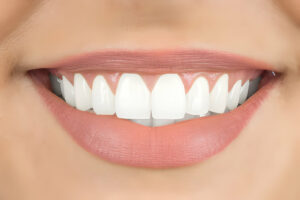Beginning a health improvement journey, especially one focused on weight loss, can seem daunting. The South Beach Diet, crafted by Dr. Arthur Agatston, shines as a guiding light for those wanting to lose weight with the South Beach Diet. It stands out due to its structured approach, prioritizing healthy fats and low-glycemic index foods. Celebrated for its South Beach diet benefits such as shedding pounds, boosting heart health, and blood sugar stability, it’s a robust plan for those looking to enhance their well-being.
This dietary strategy differs significantly from others that eliminate entire food categories or rely heavily on calorie counting. Instead, it champions a balanced way to slim down. The goal is sustainable change, not rapid, short-term results. How does the South Beach Diet work? Well, its phased method starts with a reset, cutting cravings for sweets and processed offerings, and then smoothly transitions into incorporating whole foods back into your meals, ensuring a journey towards sustainable weight loss.
Embracing the South Beach Diet means embarking on a path to not only reach your weight targets but also to transform your dietary habits for lasting health. Let’s unravel the benefits and workings of this plan, aiming for a vibrant and healthier version of you.
Table of Contents
ToggleWhat is the South Beach Diet?
Origins and Philosophy
Developed by cardiologist Dr. Arthur Agatston in the mid-1990s, the South Beach Diet emerged as a solution to heart disease and to promote weight loss without the severe restrictions of low-carb diets. It arose from recognizing that low-fat, high-carb diets failed to produce the expected weight loss results. Instead of casting all carbs as villains, Dr. Agatston introduced a novel approach that differentiated beneficial carbs from harmful ones, categorizing them as ‘good’ and ‘bad’ carbs, respectively.
In collaboration with dietitian Marie Almon, the duo designed the South Beach Diet to prioritize heart-healthy unsaturated fats and lean proteins, while limiting ‘bad’ fats and carbs that lead to blood sugar spikes. More than a diet, it represents a shift towards a healthier lifestyle, predicated on making informed food choices for improved health outcomes.
The diet’s principles captured public attention with Dr. Agatston’s 2003 book, offering a science-backed dietary plan. It appealed to many by offering a path to weight management and enhanced well-being without the sense of deprivation or constant hunger.
Key Components
At its heart, the South Beach Diet promotes swapping ‘bad’ carbs and fats for ‘good’ alternatives. ‘Bad’ carbs, identified by their high glycemic index, are known for causing sudden blood sugar spikes, energy dips, and cravings. Conversely, the diet endorses ‘good’ carbs with a low glycemic index, like whole grains, certain fruits, and vegetables, aimed at providing steady energy.
Essential to the diet are ‘good’ fats found in foods like olive oil, nuts, and avocados. These fats not only support heart health but also aid in feeling satisfied longer. Moreover, lean proteins from fish, poultry, and legumes play a crucial role in preserving muscle mass while ensuring satiety with fewer calories.
Additionally, the diet emphasizes a rich intake of vegetables, fibers, and other nutrients to achieve a well-rounded diet that bolsters overall health. By focusing on these key elements, the South Beach Diet strives to foster weight loss, reduce cravings, and enhance metabolic health.
Phases of the South Beach Diet
The South Beach Diet unfolds in three distinct phases, each targeting specific goals. South Beach Diet phases explained; Phase 1 is the introductory phase, lasting two weeks and marked by the most dietary restrictions. It aims to recalibrate the body’s chemistry, cutting cravings for sugar and refined starches. Participants often experience rapid weight loss, shedding 8 to 13 pounds, particularly around the midsection, during this period.
Phase 2, with fewer restrictions, focuses on gradual weight loss until the desired weight is achieved. This phase reintroduces ‘good’ carbs, like whole grains and some fruits, expanding dietary options while continuing weight loss efforts.
The final stage, Phase 3, is the maintenance phase. Here, no food is completely banned, but the diet’s core principles guide ongoing food selections. This phase emphasizes sustaining the healthy practices developed earlier, aiming for a lifelong commitment to balanced eating.
Benefits of the South Beach Diet
Weight Loss and Health Improvements
The South Beach Diet stands out for its dual focus: promoting weight loss and enhancing overall health. But is the South Beach Diet healthy? Indeed, its emphasis on consuming ‘good’ carbs and fats aligns with a diet rich in nutrients and fiber. Such a diet can significantly reduce weight, stabilize blood sugar levels, curb cravings, and boost energy. Particularly, cutting down on refined carbs and sugars proves advantageous for enhancing metabolic health and lowering the risk of conditions like type 2 diabetes and heart disease.
Many individuals have observed not just a notable weight reduction but also enhanced cardiovascular health upon following the South Beach Diet. The reason lies in its restricted intake of saturated fats coupled with higher consumption of lean proteins and beneficial fats. These changes can lead to lower cholesterol levels and diminished inflammation. Moreover, the diet’s phased structure supports a gradual shift towards healthier eating habits, aiding in sustaining weight loss over time.
Countless success stories have highlighted significant weight loss, particularly in the early stages. For example, some users reported shedding up to 13 pounds in the first two weeks of Phase 1. This phase is designed to recalibrate the body’s chemistry and diminish cravings. The following phases focus on encouraging steady, healthy weight loss, with the ultimate phase aimed at maintaining these health gains indefinitely.
Nutritional Balance
Unlike some diets that may skew towards being overly restrictive or imbalanced, the South Beach Diet advocates for a balanced macronutrient intake. It encourages consuming ‘good’ carbohydrates from sources like fruits, vegetables, whole grains, beans, and legumes. This variety ensures a constant supply of energy and vital nutrients. Incorporating lean proteins and healthy fats also aids in muscle maintenance and feelings of fullness, which can help prevent binges and support weight management.
Nutritionists recognize that when followed properly, this diet mirrors other scientifically backed diets, such as the DASH diet, noted for its myriad health benefits, including cholesterol reduction and lower blood pressure. This nutritional equilibrium is crucial for the diet’s success, ensuring that while users shed pounds, they’re also supplying their bodies with essential nutrients for optimal health. This balance is enhanced by the South Beach Diet food list, which includes a variety of nutritious foods, and the array of South Beach Diet recipes available for delicious meal planning.
The diet gently reintroduces ‘good’ carbs, allowing for a more comprehensive range of food choices without sacrificing weight loss objectives. This strategy helps dodge the sense of deprivation that can lead to quitting a diet, positioning the South Beach Diet as a sustainable choice for long-term health and weight control.
Lifestyle Integration
The South Beach Diet’s greatest asset is its versatility, making it a pragmatic option for various lifestyles. Its focus on easy-to-find, nutrient-dense foods enables followers to adhere to its principles, whether they’re cooking at home or eating out. The diet’s adaptability, including customizable meal plans, accommodates personal tastes and health requirements, broadening its appeal.
Its flexibility is further seen in meal timing and snack options, aiding in blood sugar regulation and hunger management. This is particularly advantageous for those with hectic schedules, deterring them from unhealthy eating patterns. Overall, the South Beach Diet transcends a mere weight loss regimen to promote mindful eating and a balanced nutritional philosophy. A diverse South Beach Diet meal plan, motivates individuals to prioritize food quality over calorie counting, fostering sustainable lifestyle shifts for improved well-being. However, it’s important to weigh the South Beach Diet’s pros and cons to ensure it aligns with your personal health goals.
How to Successfully Follow the South Beach Diet
Starting with Phase One
Embarking on the South Beach Diet starts with Phase One, targeting a robust initiation into weight loss. This initial two-week phase eliminates high-sugar and refined starch foods. The aim is to recalibrate your body’s chemistry while diminishing cravings. Your diet will focus on:
- Lean proteins like fish and skinless chicken
- High-fiber vegetables
- Low-fat dairy
- Healthy, unsaturated fats from avocados, nuts, and seeds
Strict adherence to Phase One’s guidelines is paramount for triggering the desired metabolic change. With three main meals and two snacks daily, the focus is squarely on satiation and nutritional harmony. The objective is a weight loss of 8 to 13 pounds, particularly around the abdomen, laying a solid groundwork for subsequent phases.
Success in this stage hinges on thorough preparation and dedication. It’s vital to plan your meals, stock up on approved ingredients, and mentally brace yourself for the nutritional overhaul. It’s worth noting that this phase is temporary but pivotal in setting the stage for a successful diet journey.
Maintaining Progress in Phases Two and Three
The journey continues with Phase Two, gently reintroducing “good” carbs like whole grains and certain fruits back into your meal plan. This phase persists until reaching your weight goal, aiming for a steady weight loss rate of 1 to 2 pounds weekly.
This period still includes the diet’s custom meals supplemented by fresh produce. It serves as an opportunity to hone portion control and foster healthy decision-making. Notably, phase Two incorporates two “practice” days for you to manage meal preparation entirely.
Reaching your target weight ushers you into Phase Three, a lifelong commitment to maintenance. Here, no food is entirely forbidden. The focus shifts to portion control and choosing high-quality foods to sustain weight and health gains achieved.
Incorporating Exercise and Mindful Eating
Exercise emerges as a crucial element in the South Beach Diet, particularly noted in Phase Three. It plays a significant role in enhancing metabolism and averting weight loss stalls. Opt for enjoyable activities, be it walking, swimming, or yoga, to ensure regularity and enjoyment.
Equally essential is mindful eating, a practice of being present and enjoying each bite. It encourages eating in response to hunger cues and avoiding overindulgence. This approach is key to preventing overeating and maintaining a harmonious relationship with food.
Marrying exercise with mindful eating not only accelerates weight loss but also paves the way to lasting health and wellness. The South Beach Diet transcends mere weight reduction; it advocates for a sustainable shift towards a healthier lifestyle.
Conclusion
The South Beach Diet distinguishes itself through its adaptable and sustainable method for enhancing health and promoting weight loss. Its meticulously structured phases emphasize the consumption of beneficial carbohydrates and fats. This feature, coupled with its compatibility with a variety of lifestyle choices, positions it as an ideal solution for sustained health improvements.
Adhering to the diet’s recommendations, complementing it with regular physical activity, and adopting mindful eating habits can lead to noteworthy health advancements. It’s important to understand that the primary goal transcends mere weight reduction. The essence lies in adopting a more health-conscious lifestyle.
Embarking on this journey promises a transformation towards a more vibrant and fulfilling life. Allow the South Beach Diet to be your compass, steering you toward a future replete with wellness and happiness.
FAQ
What foods can you eat on a South Beach Diet?
The South Beach Diet encourages consuming:
- Lean proteins
- Non-starchy vegetables
- Eggs
- Full-fat dairy products
- Nuts and seeds
It recommends avoiding:
- Fruits
- Starchy vegetables
- Grains
- Alcohol, particularly in the early stages.
What are 5 negatives from the South Beach Diet?
The South Beach Diet, while popular, has its downsides:
- Potential high cost
- Reliance on glycemic index, leading to a potentially restrictive initial phase
- Lack of sufficient structure after the first phase
- Inconsistencies in diet recommendations
- Possible promotion of disordered eating patterns
What is the difference between the South Beach Diet and the keto diet?
The primary distinction lies in their nutritional focus. The South Beach Diet emphasizes a balance of high protein and moderate carbohydrate intake. In contrast, the keto diet aims for high fat and minimal carbohydrates to achieve and maintain a state of ketosis.





















